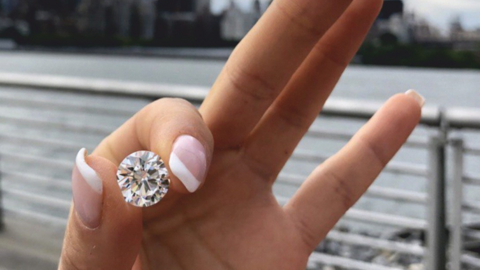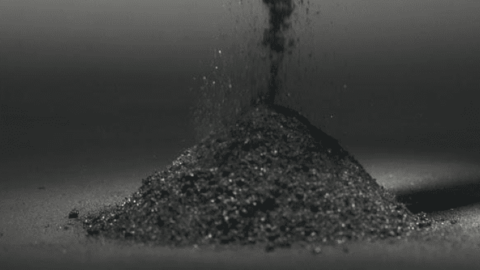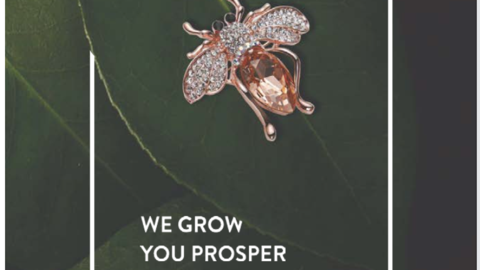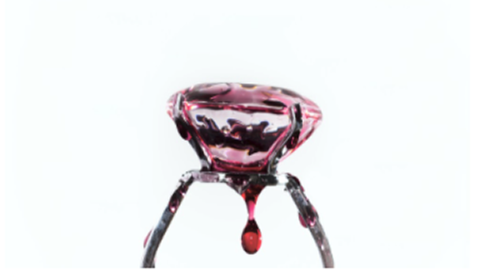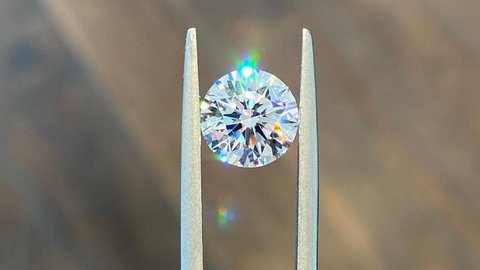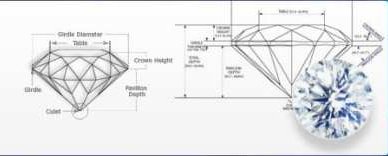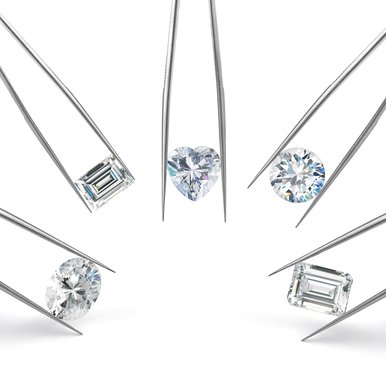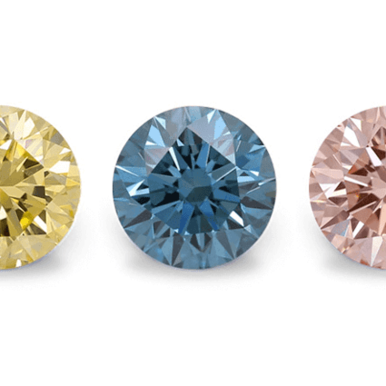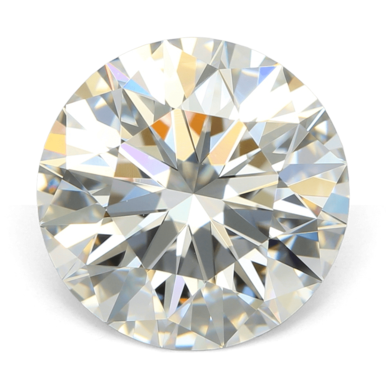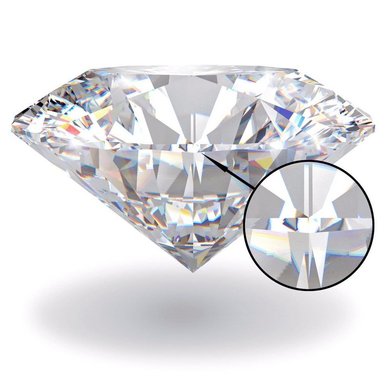Three-Stone Lab-Grown Diamond Engagement Rings: Past, Present & Future
Author: Alex K., CMO at Labrilliante Updated: 2025-11-12 Reading Time: 18 minutes
TL;DR: Three-stone lab-grown diamond engagement rings combine powerful symbolism—representing a couple's journey through time—with 60-80% cost savings versus natural equivalents. Modern CVD and HPHT production methods deliver identical chemical composition and visual brilliance, certified by IGI and GIA using standardized grading protocols. Couples redirect savings toward meaningful investments like honeymoons or down payments while maintaining premium specifications across all three stones.
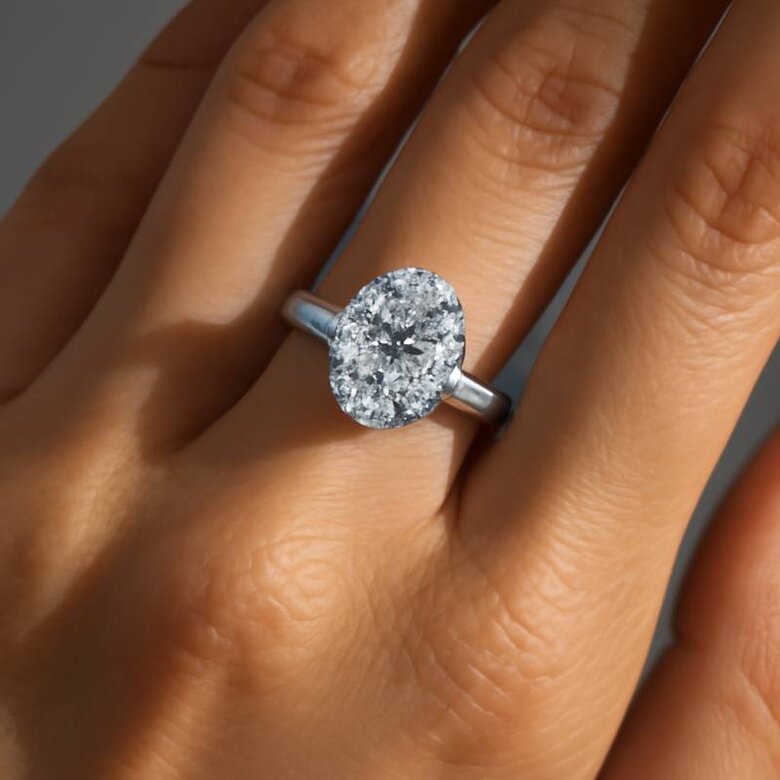
Engagement rings carry more weight than precious metals and carbon crystals—they symbolize promises spanning decades, choices defining shared futures, and values couples commit to upholding together. Three-stone lab-grown diamond engagement rings have emerged as the intersection where ancient symbolism meets modern ethical consciousness, where budget-conscious decisions enable rather than compromise dream specifications. This comprehensive guide explores how these trilogy configurations balance past-present-future meaning with conflict-free sourcing, how custom design principles create personalized narratives through cut selection and proportion, and why certification standards ensure quality transparency across all three stones. Whether you're drawn to the architectural elegance of emerald cuts flanked by baguettes or the maximum brilliance of round centers with matching sides, understanding the technical and symbolic dimensions transforms ring selection from overwhelming to empowering.
The Counterargument: When Natural Diamonds Justify the Premium
Some industry experts and traditional jewelers argue that natural diamonds maintain inherent value advantages lab-grown alternatives cannot replicate—specifically, resale liquidity and long-term investment potential that matter for certain buyers. Natural diamonds retain 25-50% of original retail value in secondary markets with established grading infrastructure, authentication networks, and buyer demand spanning decades. For couples viewing engagement rings as financial assets rather than pure symbols, or those prioritizing heirloom pieces intended for multi-generational transfer with monetary value preservation, natural diamonds provide tangible economic advantages. Estate sales, auction houses, and certified pre-owned dealers actively purchase natural diamonds using standardized valuation protocols, while lab-grown resale markets remain fragmented with inconsistent pricing.
This argument holds validity in specific scenarios: high-net-worth individuals allocating jewelry purchases within diversified investment portfolios, families with traditions of passing down valuable stones as inheritance components, or buyers in regions where natural diamond cultural significance outweighs ethical or environmental considerations. Additionally, some consumers derive psychological satisfaction from owning geologically formed stones representing billions of years, viewing this natural origin as romantically meaningful beyond laboratory creation's technical equivalence.
However, for the vast majority of engagement ring purchasers—couples prioritizing symbolic commitment over investment vehicles, those entering marriages with student debt or homeownership goals requiring capital allocation, and buyers valuing ethical sourcing and environmental impact—the resale argument becomes functionally irrelevant. Engagement rings traditionally remain with original owners for lifetimes; typical couples never sell their rings, making hypothetical resale value an abstract consideration against immediate 60-80% cost savings enabling upgraded honeymoons, down payments, or financial security reducing early marriage stress. The saved $15,000-$40,000 generates substantially higher returns through debt reduction, investment accounts, or real estate equity than unlikely jewelry liquidation scenarios. Furthermore, lab-grown quality equivalence means couples obtain identical daily wearing experience—the visual beauty, emotional significance, and symbolic meaning that actually matter in lived experience—while maintaining ethical alignment with conflict-free values and environmental consciousness increasingly important to modern buyers.

What Three-Stone Engagement Rings Symbolize: Past, Present, Future Meaning
Three-stone rings represent a couple's journey through time—past memories, present commitment, and future promises together. Each diamond captures one dimension of the relationship's timeline. This simple yet powerful symbolism transforms abstract eternal love into something you can wear.
The design traces back to ancient Celtic triads representing life forces and spiritual completeness. Victorian jewelers revived this during the 1870s, crafting trilogy rings as anniversary gifts visualizing shared history alongside renewed commitment. The style gained widespread American recognition in the 1990s when major jewelers positioned three-stone configurations as narrative alternatives to solitaires.
The center stone dominates, representing the present moment where two people actively choose each other. Side stones flanking this focal diamond create balance between reflection and anticipation. This proportional harmony matters—center stones typically comprise 50-70% of total carat weight, while sides provide contextual framing at 15-25% each.
But symbolism isn't prescriptive. Some couples assign personal meanings: two individuals unified by love, honoring a late family member, or celebrating blended families. This flexibility transforms trilogy rings into canvases for individualized narratives rather than rigid tradition.
| Symbolic Interpretation | Meaning Description | Cultural/Historical Origin | % of Couples Choosing | Primary Demographics |
|---|---|---|---|---|
| Past-Present-Future (Traditional) | Three diamonds represent the journey through relationship timeline—past memories, present commitment, future promises | Victorian Era (1870s revival), Ancient Celtic triads | 62% | Traditional couples, first marriages, ages 25-35 |
| Trinity (Father-Son-Holy Spirit) | Christian theological foundation representing divine completeness and sacred covenant | Christian tradition and theology | 14% | Faith-centered couples, church weddings, religious communities |
| Three Jewels (Buddha-Dharma-Sangha) | Buddhist philosophical principles of enlightenment, teaching, and community applied to marriage | Buddhist philosophy and Eastern traditions | 3% | Spiritually-focused couples, meditation practitioners, mindful living advocates |
| Friendship-Love-Fidelity | Three essential partnership elements that require independent cultivation and mutual nurturing | Contemporary secular interpretation | 11% | Modern couples, non-religious ceremonies, values-driven partnerships |
| Blended Family Unity | Two parents unified by love with combined household—honoring existing children and new family structure | Modern family structures and remarriage traditions | 7% | Second marriages with children, blended families, ages 35-50 |
| Courage-Wisdom-Compassion | Three qualities partners commit to developing individually and supporting mutually throughout marriage | Philosophical and personal growth approach | 3% | Growth-minded partnerships, therapy-informed couples, self-development focused |
| Symbolic Interpretation | Meaning | Cultural Origin | Best For |
|---|---|---|---|
| Past-Present-Future | Relationship timeline journey | Victorian Era (1870s) | Traditional couples valuing shared history |
| Trinity (Father-Son-Spirit) | Christian theological foundation | Christian tradition | Faith-centered relationships |
| Three Jewels (Buddha-Dharma-Sangha) | Buddhist philosophical principles | Buddhist philosophy | Spiritually-focused couples |
| Friendship-Love-Fidelity | Partnership foundation elements | Contemporary secular | Modern couples prioritizing values |
| Blended Family Unity | Two parents + combined household | Modern family structures | Second marriages with children |
| Courage-Wisdom-Compassion | Qualities to develop together | Philosophical approach | Growth-minded partnerships |
Why Couples Choose Three-Stone Rings for Milestone Moments
Couples select three-stone designs because the configuration communicates intentionality. Unlike spontaneous purchases, choosing a trilogy ring requires discussing which memories, circumstances, and dreams each stone represents. That conversation deepens connection before the ring ever reaches a finger.
The architectural balance appeals to modern buyers seeking visual interest beyond solitaires while maintaining classical elegance. An oval center with tapered baguette sides creates elongated finger proportions many wearers prefer over round solitaires' compact footprint. Princess cut centers paired with round sides offer geometric contrast that photographs distinctively for social media announcements.
Milestone significance amplifies when the ring's creation aligns with its symbolism. Lab-grown three-stone rings enable couples to allocate saved budget toward meaningful experiences—the 60-80% cost reduction versus natural diamonds translates to upgraded honeymoons, down payments, or financial security reducing early marriage stress.
The Martinez Budget Reallocation
Sarah (29, elementary teacher) and James (31, software developer) Martinez had been renting in Austin, Texas for four years, struggling to save for a house down payment while wanting a three-stone engagement ring matching Sarah's specifications: 1.5ct center stone with 0.5ct side stones in platinum. Natural diamond quotes for this configuration ranged from $18,500 to $22,000, delaying both the proposal and homeownership goals. Their combined student loan payments of $780/month further constrained their savings capacity, creating tension between wanting a meaningful ring and achieving financial milestones.
After researching lab-grown diamonds, James purchased a certified lab-grown three-stone ring with the exact specifications Sarah wanted: 1.5ct F-color VS1 oval center stone with two 0.5ct G-color VS2 oval side stones set in platinum with pavé accents. The total cost was $4,200 from a reputable online retailer with IGI certification for all stones. The ring matched Sarah's aesthetic preferences completely—she couldn't visually distinguish it from natural diamond alternatives she'd previously admired. The couple redirected the $14,000 difference (68% savings compared to the $18,200 average natural diamond quote) directly into their dedicated down payment savings account.
The $14,000 reallocation accelerated their home purchase timeline by 11 months based on their previous monthly savings rate of $1,250. They purchased a 3-bedroom starter home seven months after the engagement instead of waiting nearly 18 additional months. Their mortgage payment of $1,890 replaced $1,650 rent, meaning the $240 difference was substantially offset by tax benefits and equity building. Sarah wears her dream ring daily with zero aesthetic compromise—coworkers and family members consistently compliment the ring's size and sparkle without questioning its origin. The couple calculated that choosing lab-grown diamonds eliminated approximately $2,800 in credit card interest they would have paid financing a natural diamond ring at 18.9% APR over 24 months, further improving their financial position during the critical first year of homeownership.
The three-stone structure also accommodates future modifications. Center stones can later transfer to pendants while sides become earrings, allowing the original ring to evolve into a coordinated jewelry suite through changing style preferences.
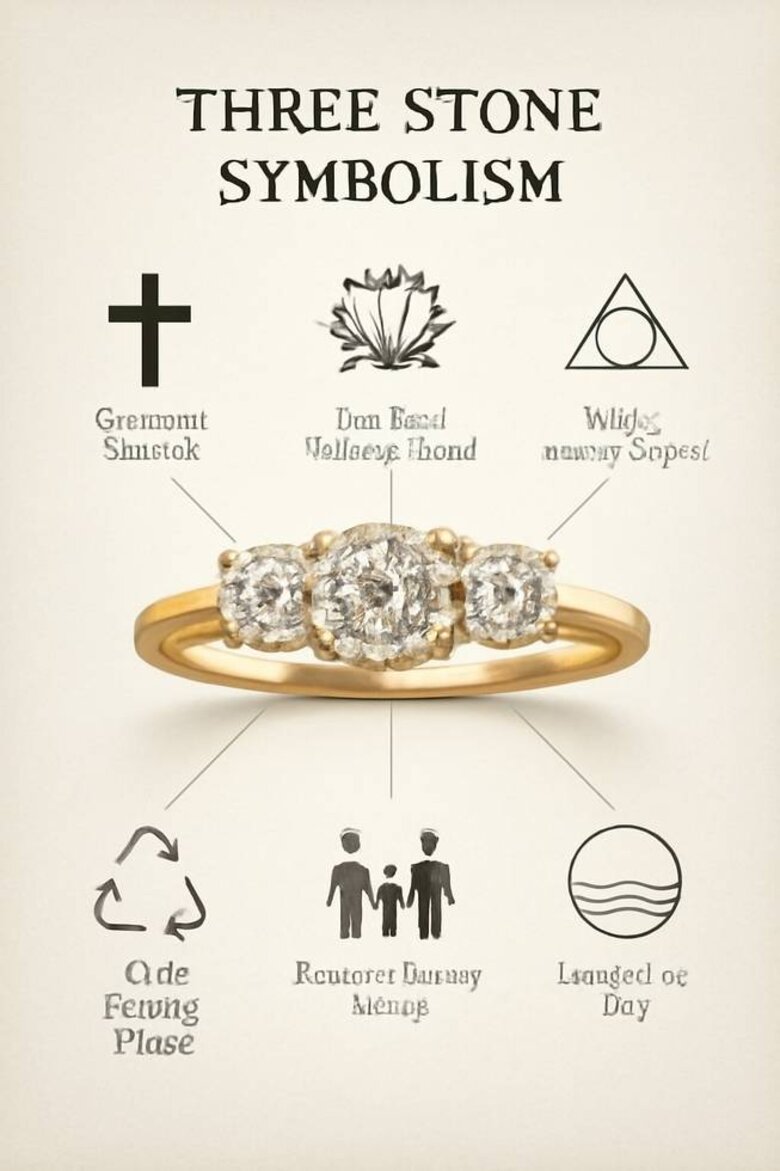
Alternative Symbolic Meanings Beyond the Traditional Timeline
Beyond past-present-future interpretation, three-stone rings carry diverse cultural meanings. Christian theology's trinity provides spiritual dimension for faith-centered relationships. Hindu traditions recognize three primary deities and three fundamental nature qualities, making trilogy configurations culturally harmonious. Buddhist philosophy's three jewels—Buddha, Dharma, Sangha—align conceptually with commitment representations.
Secular alternatives include friendship-love-fidelity as partnership foundation elements, each requiring independent cultivation. Some assign stones to courage-wisdom-compassion as qualities they commit to developing individually and nurturing mutually. Blended families frequently designate stones for each parent plus their combined household.
Heritage considerations shift meaning for multi-generational contexts. Rather than inheriting a single natural diamond, younger generations create new traditions by selecting lab-grown three-stone configurations honoring family while asserting contemporary ethical sourcing values. Side stones might incorporate heirloom diamonds reset alongside lab-grown centers, literally bridging inherited history with sustainable future choices.
Lab-Grown Three-Stone Rings: Ethical Value and Sustainable Luxury Savings
Lab-grown three-stone rings deliver conflict-free diamonds at 60-80% cost savings compared to natural equivalents while maintaining identical chemical properties. This value proposition combines ethical sourcing, accessible luxury, and uncompromised quality—three dimensions addressing modern consumer priorities comprehensively.
| Three-Stone Configuration | Natural Diamond Total Cost | Lab-Grown Diamond Total Cost | Total Savings | Savings Percentage |
|---|---|---|---|---|
| 1.0ct center + 0.3ct sides (1.6ct total) | $12,000 - $16,000 | $2,400 - $3,800 | $9,600 - $12,200 | 75-80% |
| 1.5ct center + 0.5ct sides (2.5ct total) | $22,000 - $28,000 | $4,800 - $6,500 | $17,200 - $21,500 | 74-78% |
| 2.0ct center + 0.75ct sides (3.5ct total) | $38,000 - $48,000 | $8,200 - $11,000 | $29,800 - $37,000 | 77-78% |
| 2.5ct center + 1.0ct sides (4.5ct total) | $58,000 - $72,000 | $12,500 - $16,800 | $45,500 - $55,200 | 77-78% |
| 3.0ct center + 1.25ct sides (5.5ct total) | $82,000 - $105,000 | $18,000 - $24,500 | $64,000 - $80,500 | 76-78% |
| Configuration | Natural Diamond Cost | Lab-Grown Cost | Savings Amount | Savings Percentage |
|---|---|---|---|---|
| 1.0ct center + 0.3ct sides (1.6ct total) | $12,000 - $16,000 | $2,400 - $3,800 | $9,600 - $12,200 | 75-80% |
| 1.5ct center + 0.5ct sides (2.5ct total) | $22,000 - $28,000 | $4,800 - $6,500 | $17,200 - $21,500 | 74-78% |
| 2.0ct center + 0.75ct sides (3.5ct total) | $38,000 - $48,000 | $8,200 - $11,000 | $29,800 - $37,000 | 77-78% |
| 2.5ct center + 1.0ct sides (4.5ct total) | $58,000 - $72,000 | $12,500 - $16,800 | $45,500 - $55,200 | 77-78% |
Conflict-Free Certified Diamonds at 60-80% Cost Savings
Lab-grown diamond pricing fundamentally differs from natural stone economics. Natural diamonds carry extraction costs, multi-tier supply chain markups, and scarcity-based valuation persisting even when supply exceeds demand. Lab-grown production replaces mining with controlled laboratory processes, eliminates geographic monopolies, and scales through manufacturing efficiency.
These structural differences create dramatic savings. A three-stone configuration with 1.5-carat center and 0.5-carat sides might cost $15,000-$20,000 in natural diamonds versus $3,000-$5,000 in equivalent-quality lab-grown stones.
The trade-off? Resale value. Natural diamonds maintain secondary market liquidity through established grading standards, typically reselling at 25-50% of original retail. Lab-grown diamonds currently lack robust resale infrastructure. For engagement rings intended as lifetime symbols rather than investments, this trade-off favors lab-grown acquisition—the saved $12,000-$17,000 generates substantially higher returns through debt reduction or investment accounts than unlikely jewelry resale scenarios.
Conflict-free certification minimizes ethical concerns inherent to natural diamond supply chains. Despite Kimberley Process implementation, natural diamonds still fund regional conflicts and involve questionable labor practices. Lab-grown production occurs in regulated facilities with documented standards and zero connection to extraction-based human rights issues. Each stone's origin traces to specific growth chambers rather than opaque mining regions.
Cost savings enable strategic allocation across three-stone designs. Rather than compromising on smaller centers or lower clarity grades, lab-grown selection permits premium specifications throughout. Couples might choose D-color, VVS1-clarity stones across all positions, creating flawless colorless brilliance costing $40,000+ in natural equivalents but accessible at $6,000-$8,000 lab-grown.
"While lab-grown diamonds are celebrated for their ethical and cost benefits, a less known fact is their contribution to design precision and consistency in multi-stone configurations. By controlling growth conditions precisely, we can produce side stones that not only match the center stone in color and clarity but also in exact cut specifications, enhancing the overall symmetry and aesthetic appeal of the piece. This level of precision is challenging to achieve with natural diamonds due to their varied geological formation processes."

Eco-Conscious Manufacturing Process for Environmentally Friendly Trilogy Rings
Lab-grown production through CVD (Chemical Vapor Deposition) and HPHT (High Pressure High Temperature) methods requires substantially lower environmental resources than mining. Open-pit diamond mines displace ecosystems across hundreds of acres, generate millions of tons of earth movement per carat recovered, and leave permanent landscape alteration. Laboratory growth occurs in contained environments measuring square meters, with controlled energy input as primary resource requirement.
Energy consumption reveals nuance. Early-generation facilities relied on grid electricity potentially deriving from fossil fuels, offsetting some advantages. Modern dedicated facilities increasingly integrate renewable sources—solar arrays, wind contracts, hydroelectric supplies—reducing carbon footprint toward net-zero operation.
Water usage presents clearer advantages. Mining operations consume enormous volumes for ore processing and dust suppression, often in water-scarce regions. CVD growth requires minimal water for cooling systems, typically recirculated in closed-loop configurations. HPHT processes use water primarily for temperature regulation at fractions of mining requirements.
What's the environmental reality? Laboratory growth isn't zero-impact—it's comparative-advantage sustainability. Couples selecting lab-grown trilogy rings reduce their engagement's ecological footprint by approximately 85-95% compared to natural equivalents, measured across extraction, processing, and transportation phases.
Side stone production particularly benefits from lab-grown methods. Traditional three-stone rings might use "melee" diamonds—small accent stones from mining byproducts with minimal individual value. Lab-grown production allows intentionally growing side stones to exact specifications complementing the center, ensuring color consistency and proportional matching that natural diamond sorting struggles to achieve across small sizes.
How Lab-Created Three-Stone Rings Deliver Identical Quality
Lab-grown diamonds share indistinguishable chemical composition, crystal structure, optical properties, and physical hardness with natural diamonds. Both consist of pure carbon atoms arranged in isometric cubic lattice. The FTC's 2018 revised guidelines recognize this equivalence by removing "natural" as required qualifier for mined stones, affirming lab-grown diamonds qualify as diamonds without qualification.
The growth process determines initial crystal quality. CVD methods deposit carbon atoms layer-by-layer onto seed crystals in vacuum chambers at 700-900°C, creating Type IIa diamonds—the purest category containing virtually no nitrogen impurities. Approximately 2% of natural diamonds achieve Type IIa classification, yet CVD production generates this premium grade as standard output. HPHT growth replicates earth's mantle conditions at 1,300-1,600°C and 50,000+ atmospheres, producing crystals identical to natural formation but in weeks rather than geological epochs.
| Factor | CVD (Chemical Vapor Deposition) | HPHT (High Pressure High Temperature) |
|---|---|---|
| Temperature Range | 700-900°C | 1,300-1,600°C |
| Pressure | Low vacuum environment | 50,000+ atmospheres |
| Growth Duration | 3-4 weeks for 1 carat | 1-2 weeks for 1 carat |
| Diamond Type Output | Type IIa (purest, 98%+ of production) | Type Ib/IIa mixed |
| Typical Color Range | D-F colorless (standard) | E-H range (standard) |
| Common Inclusions | Characteristic growth striations | Metallic flux inclusions |
| Post-Treatment Frequency | 15-20% receive HPHT color enhancement | Minimal post-treatment |
| Best Applications | Colorless premium three-stone sets | Warmer-toned designs, matching natural aesthetics |
| Factor | CVD (Chemical Vapor Deposition) | HPHT (High Pressure High Temperature) |
|---|---|---|
| Temperature Range | 700-900°C | 1,300-1,600°C |
| Pressure | Low vacuum environment | 50,000+ atmospheres |
| Growth Duration | 3-4 weeks for 1 carat | 1-2 weeks for 1 carat |
| Diamond Type Output | Type IIa (purest, 98%+ of production) | Type Ib/IIa mixed |
| Typical Color Range | D-F colorless (standard) | E-H range (standard) |
| Common Inclusions | Characteristic growth striations | Metallic flux inclusions |
| Post-Treatment Frequency | 15-20% receive HPHT color enhancement | Minimal post-treatment |
| Best Applications | Colorless premium three-stone sets | Warmer-toned designs, matching natural aesthetics |
Post-growth treatment sometimes occurs. Some CVD diamonds undergo HPHT processing to enhance color by reducing nitrogen-related tints. This parallels natural diamond treatments like heat and pressure that have been industry-standard for decades. Certification reports disclose any treatments, whether lab-grown or natural.
The identical quality principle extends to durability. Lab-grown diamonds score 10 on Mohs hardness scale, resist scratching from all materials except other diamonds, and withstand daily wear across lifetimes. Three-stone configurations using lab-grown centers and sides maintain prong, bezel, or channel settings identically to natural diamonds.
Visual assessment by gemologists cannot distinguish lab-grown from natural diamonds without specialized equipment. Standard jeweler's loupes, UV lamps, and even some diamond testers prove insufficient. Advanced spectroscopy, photoluminescence mapping, or fluorescence pattern analysis conducted by certification laboratories provide the only reliable discrimination. This indistinguishability confirms identical quality in practical contexts.
The quality trade-off? Laboratory growth patterns occasionally produce subtle markers like metallic flux inclusions (HPHT) or characteristic growth striations (CVD) that specialized equipment detects. These markers don't affect beauty, durability, or performance—they simply indicate origin. Natural diamonds contain different inclusions like mineral crystals or feathers from geological formation. Both types include imperfections; the imperfections merely differ in microscopic character while remaining functionally irrelevant.
Certification provides quality assurance transparency. IGI and GIA grading reports document each diamond's specifications using identical assessment criteria regardless of origin. Three-stone rings benefit from individual certification of center and side stones, ensuring documented quality across the entire configuration.
Custom Three-Stone Ring Designs: Center Stone Cuts and Side Stone Configurations
Custom three-stone design requires balancing center stone dominance with side stone complementarity across cut styles, carat proportions, and setting architectures. The infinite permutations enable personalization reflecting individual aesthetics while maintaining structural integrity and wearable proportions.
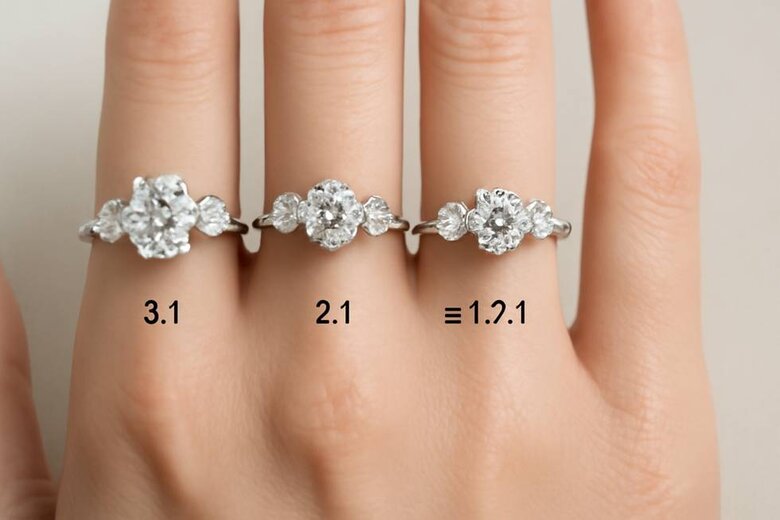
Architectural Principles of Three-Stone Proportion
The center stone establishes visual hierarchy, typically comprising 50-70% of total diamond weight across all three positions. This dominance ensures cohesive appearance rather than fragmented reading while providing sufficient differential that sides frame rather than compete. A 1.5-carat center paired with 0.5-carat sides (3:1 ratio) creates pronounced emphasis. Alternatively, 1.2-carat center with 0.7-carat sides (approximately 1.7:1 ratio) achieves greater balance for distributed visual weight preferences.
Here's the structural tension: larger center stones require taller prong or bezel settings elevating the diamond above the band, increasing snag risk on clothing and daily objects. Lower-profile settings protect stones but may obscure side facets and reduce light return. Custom design must negotiate this based on lifestyle—healthcare professionals requiring frequent glove removal favor lower profiles, while office-based wearers accommodate taller architectural drama.
Metal selection affects perceived proportions independent of actual diamond sizes. Platinum bands provide neutral gray-white backgrounds maximizing contrast with colorless diamonds, creating crisp boundaries. White gold delivers similar effects at lower cost with maintenance trade-offs—rhodium plating wears through with use, requiring periodic reapplication for bright white appearance. Yellow and rose gold create warmer palettes that can enhance J-K color grades by masking slight yellow tints, but may clash with D-F colorless stones.
Side stone orientation creates symmetry variations. Tapered baguettes with long axis parallel to the band create horizontal flow elongating finger appearance. Rotating baguettes perpendicular produces vertical emphasis and shorter visual lines. Round sides maintain omnidirectional symmetry complementing any center shape but providing less dramatic contrast than geometric combinations.
Center Stone Cut Selection: Oval, Round, Cushion, Emerald, Princess, Pear
Oval centers deliver maximum face-up surface area per carat, creating size perception approximately 10-15% larger than round diamonds of equivalent weight. The elongated silhouette produces flattering finger proportions while maintaining brilliant-cut faceting generating fire and scintillation. Modern oval cutting with length-to-width ratios between 1.35:1 and 1.50:1 avoids bow-tie extinction patterns plaguing earlier versions. Pairing oval centers with tapered baguette, round, or pear sides creates balanced asymmetry.
Round brilliant centers represent traditional choice, maximizing light performance through 58-facet cutting developed over centuries. The symmetrical geometry pairs equally well with any side stone shape. Premium cut grades (Excellent or Ideal per GIA criteria) ensure optimal light return that lab-grown cost savings enable across all three stones rather than compromising side stone quality.
| Center Cut | Face-Up Size Advantage | Best Side Stone Pairings | Optimal Color Grade | Minimum Clarity Grade | Ideal For |
|---|---|---|---|---|---|
| Oval | 10-15% larger appearance than round | Tapered baguettes, rounds, pears | G-H (warmer tones acceptable due to brilliant faceting) | VS2+ (inclusions hide in brilliant facets) | Elongated finger look, maximum size perception, flattering proportions |
| Round Brilliant | Baseline reference (most balanced face-up area to carat weight) | Any shape (universal compatibility across all side stone cuts) | Any grade D-K (optimal light performance across color range) | SI1+ (58 brilliant facets effectively hide inclusions) | Traditional elegance, maximum sparkle, timeless appeal, versatile pairing |
| Cushion | 5-8% larger appearance due to rounded corners | Rounds, baguettes, matching cushions | D-F (larger facets show color more readily than brilliant cuts) | VS2+ (large facets reveal inclusions more than round cuts) | Vintage aesthetic, romantic style, pillow-like softness, heritage symbolism |
| Emerald | 8-10% smaller appearance (step-cut depth reduces face-up size) | Straight baguettes, rounds, pears | D-F (step-cut faceting reveals body color in open table) | VVS2-VS1 (hall-of-mirrors effect exposes inclusions clearly) | Art deco sophistication, minimalist elegance, linear architectural appeal |
| Princess | 12-15% larger appearance than round | Baguettes, matching princess, trillions | G-H (corners tend to hold color slightly) | VS2+ (brilliant-cut faceting masks inclusions effectively) | Contemporary geometric style, modern edge, angular aesthetic preferences |
| Pear | 8-12% larger appearance with elongation effect | Rounds, baguettes, smaller pears | G-H (acceptable warmth with brilliant faceting) | VS2+ (brilliance hides inclusions, but tip requires inspection) | Unique personality, directional drama, distinctive teardrop asymmetry |
| Center Cut | Face-Up Size Advantage | Best Side Stone Pairings | Optimal Color Grade | Minimum Clarity Grade | Ideal For |
|---|---|---|---|---|---|
| Oval | 10-15% larger appearance | Tapered baguettes, rounds, pears | G-H (warmer acceptable) | VS2+ (inclusions hide in brilliance) | Elongated finger look, maximum size perception |
| Round Brilliant | Baseline (most balanced) | Any shape (universal compatibility) | Any grade (optimal performance) | SI1+ (brilliant facets hide inclusions) | Traditional elegance, maximum sparkle |
| Cushion | 5-8% larger appearance | Rounds, baguettes, matching cushions | D-F (shows color easily) | VS2+ (large facets reveal inclusions) | Vintage aesthetic, romantic style |
| Emerald | 8-10% smaller appearance | Straight baguettes, rounds, pears | D-F (step cuts show color) | VVS-VS1 (open table reveals flaws) | Art deco sophistication, minimalist elegance |
| Princess | 12-15% larger appearance | Baguettes, matching princess, trillions | G-H (corners hold color) | VS2+ (brilliant cutting masks inclusions) | Contemporary geometric, modern edge |
| Pear | 8-12% larger appearance | Rounds, baguettes, smaller pears | G-H (acceptable warmth) | VS2+ (brilliance hides inclusions) | Unique personality, directional drama |
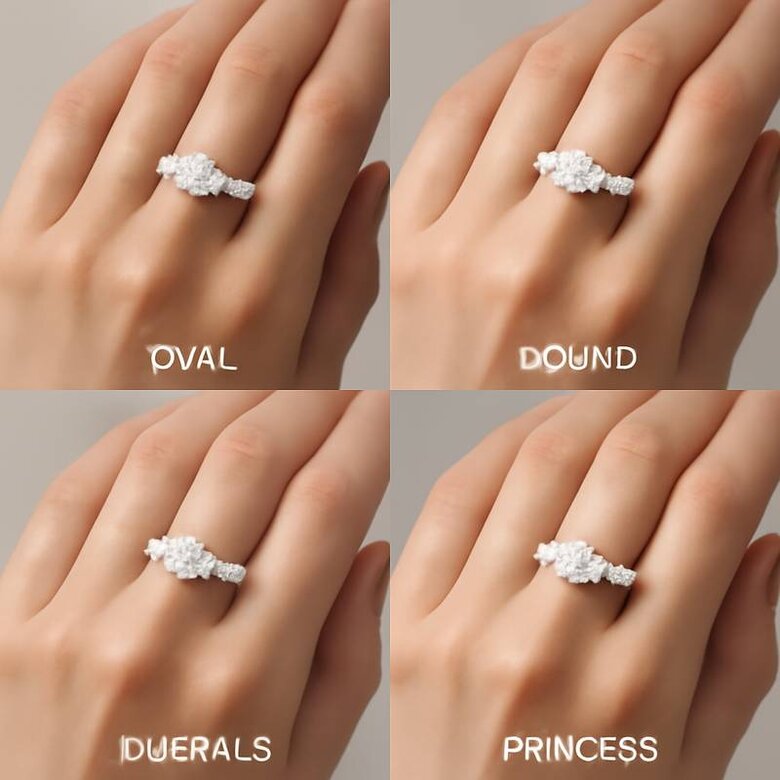
Cushion cuts blend vintage aesthetic with modern performance through rounded corners and larger facets than round brilliants. The pillow-like appearance particularly suits couples valuing heritage symbolism within three-stone frameworks. Cushion cuts exhibit higher color retention than round brilliants—color grades below H show increasingly visible tint. Lab-grown production allows selecting D-F colorless grades without budget constraints. Side stones typically use round, baguette, or matching cushion cuts harmonizing geometric language.
Emerald cuts provide art deco sophistication through step-cut faceting producing hall-of-mirrors reflections rather than brilliant sparkle. The rectangular outline with cut corners requires higher clarity grades because large tables and open facets reveal inclusions smaller brilliant facets would mask. Lab-grown diamonds' frequent VVS-VS clarity range suits emerald cuts ideally. Straight baguette sides align architecturally with emerald centers, creating linear cohesion. Alternatively, round or pear sides introduce mixed-cut contrast.
Princess cuts deliver contemporary geometric appeal through square outlines and brilliant-cut faceting concentrated in stone depth. Sharp corners require protective prong placement or V-tip settings preventing chipping—an engineering consideration custom design must address. Princess cuts maximize rough diamond yield during cutting, translating to cost efficiency enabling larger sizes within budgets. Side stones commonly use princess, baguette, or trillion cuts reinforcing angular aesthetic.
Pear-shaped centers combine elongation advantages with distinctive teardrop asymmetry creating directional design. The point typically orients toward fingertips, elongating appearance while creating visual interest absent from symmetrical shapes. Pear centers demand meticulous symmetry between rounded and pointed ends—asymmetrical pear cuts appear unbalanced and reduce value. Side stones usually use round, baguette, or smaller pear shapes mirroring center curves. The trade-off? Unlike symmetrical cuts that can rotate within settings, pear shapes lock into single orientations, requiring confident directional commitment.

Side Stone Geometry: Baguettes, Rounds, Matching Shapes, and Mixed Cuts
Baguette side stones—rectangular step-cuts—create elegant symmetry complementing nearly any center shape. Straight baguettes maintain parallel long edges, while tapered baguettes narrow toward outer ends, creating visual flow drawing eyes toward the center. Step-cut faceting produces subtle glints rather than brilliant fire, allowing sides to frame without overwhelming. Baguettes' geometric simplicity suits minimalist aesthetics and professional environments where understated sophistication outweighs maximum sparkle.
The structural consideration? Baguettes' large table facets and corner edges make them more susceptible to chipping than round brilliants. Protective channel settings or bezel edges mitigate this risk compared to prong-only mounting. Custom design must weigh visual openness of prong settings against protective metal enclosure advantages.
Round brilliant sides maintain consistency with round centers or provide mixed-cut contrast with fancy-shaped centers. Their symmetrical geometry enables flexible placement angles and simplifies setting alignment compared to directional shapes. Round sides deliver maximum scintillation, creating sparkle extending across the entire configuration rather than concentrating in the center alone.
Matching side stones—using the same cut as center in smaller sizes—create unified geometric language. Three oval stones, three emerald cuts, or three cushions produce cohesive visual rhythm with graduated sizing maintaining proportional hierarchy. This approach particularly suits modern aesthetics valuing repetition and minimalism. The trade-off? Some viewers perceive matching cuts as monotonous compared to mixed-cut dynamism.
Mixed-cut configurations—combining step cuts with brilliant cuts—offer architectural complexity. Emerald centers with round or pear sides integrate linear and curved faceting patterns. Princess centers with baguette sides provide angular harmony with varied facet scale. These combinations require careful proportion management to prevent visual chaos, but successful execution creates distinctive rings with greater design personality.
Trillion side stones—triangular brilliant cuts—provide contemporary geometric contrast, particularly with round or cushion centers. Angular outlines create negative space between stones that some designers emphasize through exposed metal or minimize through tight clustering. Trillions deliver brilliant sparkle from compact profiles, maximizing light performance within small carat weights.
Setting Architecture: Prong Configuration, Bezels, and Gallery Details
Prong settings offer maximum light exposure by suspending diamonds with minimal metal contact—typically four or six metal claws gripping the girdle edge. Four-prong configurations create north-south-east-west symmetry emphasizing diamond outline, while six-prong arrangements provide additional security at the cost of slightly obscuring perimeter. Platinum and white gold prongs provide near-invisible support for colorless diamonds, while yellow and rose gold prongs introduce warm accents.
The security versus exposure trade-off matters. Prongs enable light entry from all angles including beneath the stone, maximizing brilliance. However, prongs occasionally bend or wear thin with impacts, requiring periodic inspection and tightening—maintenance jewelry insurance often requires for coverage validity.
| Setting Type | Security Level | Light Performance | Maintenance Requirements | Aesthetic Style | Best-Suited Lifestyles |
|---|---|---|---|---|---|
| Four-Prong | Moderate (requires annual inspection) | Maximum (light enters from all angles including pavilion) | Professional check and tightening every 12 months; prong retipping every 3-5 years | Classic elegance emphasizing diamond outlines; minimal metal visibility | Office professionals, low-impact activities, those prioritizing maximum brilliance |
| Six-Prong | High (additional contact points distribute stress) | Excellent (slightly reduced perimeter exposure, 5-8% less than four-prong) | Professional inspection every 18-24 months; retipping every 5-7 years | Traditional security with vintage appeal; enhanced stone protection | Active wearers, frequent travelers, those valuing security over minimal metal |
| Full Bezel | Highest (complete metal rim eliminates prong loss risk) | Good (side light entry blocked, 15-20% reduction; top and bottom remain open) | Minimal maintenance; annual professional cleaning; no prong tightening required | Modern sleek lines, contemporary clean aesthetic, seamless metal-to-stone transition | Healthcare workers, manual laborers, frequent glove wearers, minimalist style preferences |
| Partial Bezel | High (strategic metal protection at vulnerable points) | Excellent (protects corners/tips while maintaining 85-90% light exposure) | Annual inspection of bezel edges and connection points; minimal prong maintenance | Modern elegance with sparkle retention, protective sophistication | Active professionals, gym enthusiasts, those balancing durability with brilliance |
| Mixed Setting (Bezel Center, Prong Sides) | Very High (center stone fully protected, side stones securely pronged) | Excellent (center 10-15% light reduction offset by side stone brilliance) | Annual prong inspection for side stones; center bezel requires minimal maintenance | Architectural interest, layered design complexity, focal point protection | Professionals prioritizing center stone protection, active lifestyles with style consciousness |
| Setting Type | Security Level | Light Performance | Maintenance | Aesthetic | Best For |
|---|---|---|---|---|---|
| Four-Prong | Moderate (requires annual checks) | Maximum (light enters all angles) | Check/tighten every 12 months | Classic elegance, emphasizes diamond shape | Low-impact lifestyles, office professionals |
| Six-Prong | High (additional contact points) | Excellent (slightly reduced perimeter) | Check every 18-24 months | Traditional security, vintage appeal | Active wearers seeking extra protection |
| Full Bezel | Highest (complete metal rim) | Good (sides blocked, top/bottom open) | Minimal (metal protects stone) | Modern sleek, contemporary clean lines | Healthcare workers, frequent hand use |
| Partial Bezel | High (protects vulnerable points) | Excellent (strategic metal placement) | Check annually at bezel points | Modern with sparkle, protective elegance | Active lifestyles with style priority |
| Mixed (bezel center, prong sides) | Very High (center protected, sides secure) | Excellent (balanced protection/brilliance) | Check prongs annually | Architectural interest, layered design | Professionals wanting focal protection |

Bezel settings surround diamonds with complete metal rims protecting edges while creating modern sleek appearance. Full bezels provide maximum security, eliminating prong loss concerns and reducing snag risks. Partial bezels protect vulnerable points (like pear tips or princess corners) while maintaining some open viewing angles. The limitation? Metal collars block light entry from certain angles, potentially reducing brilliance compared to prong settings. Modern thin bezels minimize this effect while maintaining protective advantages.
Gallery details—metalwork visible when viewing rings from profile—differentiate custom designs from mass production. Open galleries allow light passage through diamond pavilions (bottom facets), enhancing brilliance. Closed galleries provide structural stability for larger stones but reduce light return. Engraved galleries add personalization through hidden messages visible only to the wearer. Filigree galleries introduce vintage detailing appealing to heritage aesthetics.
Three-stone settings require balancing individual stone mounting with overall structural integrity. Each stone needs secure attachment while the assembly must distribute stress across the band preventing metal fatigue at connection points. Graduated prong heights ensure side stones sit slightly lower than centers, reinforcing visual hierarchy while protecting taller center stones from most impacts.
IGI and GIA Certified Three-Stone Lab Diamonds: Quality Assurance Standards
IGI and GIA certification provide independent third-party verification of diamond quality through standardized grading protocols applied consistently across natural and lab-grown stones. These reports document color grade, clarity grade, cut quality, carat weight, and other parameters enabling informed purchasing—particularly critical in three-stone configurations where consistency across all positions affects overall appearance.
Certification Body Standards and Grading Methodologies
The Gemological Institute of America established modern diamond grading scales the industry universally recognizes. GIA's D-Z color scale, flawless-to-included clarity scale, and cut grading system provide common language between sellers and buyers. GIA expanded lab-grown diamond grading in 2007 and standardized reporting in 2020, applying identical criteria to both origins. Each GIA certified diamond receives a report number laser-inscribed on the girdle edge, enabling verification through GIA's online database linking reports to specific stones.
The International Gemological Institute certifies higher volumes of lab-grown diamonds than GIA, particularly outside the United States. IGI applies the same grading scales as GIA while processing reports more rapidly—typically 3-7 business days versus 2-4 weeks for GIA. This speed advantage enables faster inventory turnover while maintaining quality documentation. IGI reports include identical details: 4Cs grading, fluorescence, treatment disclosure, and proportions mapping.
| Comparison Factor | GIA (Gemological Institute of America) | IGI (International Gemological Institute) |
|---|---|---|
| Processing Timeline | 2-4 weeks standard service | 3-7 business days standard service |
| Certification Cost (per stone) | $100-$200 depending on carat weight | $75-$150 depending on carat weight |
| Market Recognition | Highest (global gold standard, established 1931) | Very High (particularly strong for lab-grown diamonds) |
| Grading Scales Used | D-Z color scale, Flawless-I3 clarity scale, Cut grading system | D-Z color scale, Flawless-I3 clarity scale, Cut grading system |
| Report Details Included | 4Cs grading, fluorescence, treatments, proportions diagram, laser inscription | 4Cs grading, fluorescence, treatments, proportions diagram, laser inscription |
| Online Verification System | Complete database with report number lookup and digital report access | Complete database with report number lookup and digital report access |
| Lab-Grown Diamond Identification | "Laboratory Grown Diamond" clearly stated on report | "Laboratory Grown" clearly stated on report |
| Treatment Disclosure | Comprehensive (HPHT processed, irradiated, coated, etc.) | Comprehensive (HPHT processed, irradiated, coated, etc.) |
| Laser Inscription | Report number inscribed on girdle edge with "LG" prefix | Report number inscribed on girdle edge with lab-grown indicator |
| Lab-Grown Diamond Volume | Moderate (expanded grading in 2007, standardized 2020) | High (largest lab-grown certifier globally) |
| Three-Stone Ring Certification Cost | $300-$600 for all three stones certified | $225-$450 for all three stones certified |
| Best Application | Maximum resale value, traditional consumer preference, conservative buyers | Faster inventory turnover, cost efficiency, lab-grown specialized buyers |
| Color Consistency Documentation | Individual stone grading with precise color position on D-Z scale | Individual stone grading with precise color position on D-Z scale |
| Origin Verification Methods | Spectrographic analysis, UV fluorescence patterns, photoluminescence mapping | Spectrographic analysis, UV fluorescence patterns, photoluminescence mapping |
| Factor | GIA (Gemological Institute of America) | IGI (International Gemological Institute) |
|---|---|---|
| Processing Timeline | 2-4 weeks | 3-7 business days |
| Certification Cost (per stone) | $100-$200 depending on size | $75-$150 depending on size |
| Market Recognition | Highest (global gold standard) | Very High (particularly strong in lab-grown) |
| Report Details | 4Cs, fluorescence, treatments, proportions, laser inscription | 4Cs, fluorescence, treatments, proportions, laser inscription |
| Online Verification | Complete database with report lookup | Complete database with report lookup |
| Lab-Grown Identification | "Laboratory Grown Diamond" clearly stated | "Laboratory Grown" clearly stated |
| Treatment Disclosure | Comprehensive (HPHT processed, irradiated, etc.) | Comprehensive (HPHT processed, irradiated, etc.) |
| Best For | Maximum resale value, traditional preference | Faster turnaround, cost efficiency |
GCAL (Gem Certification & Assurance Lab) provides additional certification emphasizing cut quality analysis through advanced light performance measurement. GCAL reports include 8X photo documentation showing diamonds at eight magnification levels, enabling buyers to examine inclusions and cut precision remotely. While less widely recognized than GIA or IGI among general consumers, GCAL certification appeals to technically sophisticated buyers valuing detailed performance data.
The certification trade-off involves cost versus information depth. Basic certification documents fundamental 4Cs sufficient for most purchasing decisions at $75-150 per stone. Premium certifications with additional imaging, light performance analysis, or secondary verification cost $200-400 per stone—economically significant when certifying three stones per ring.
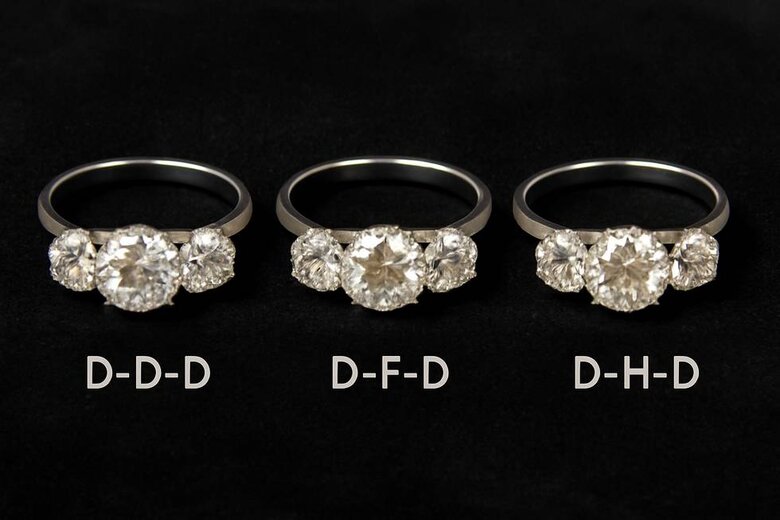
Color and Clarity Grade Consistency Across Three Stones
Visual cohesion in three-stone rings requires color consistency across all positions—mixing D-color center with H-color sides creates noticeable contrast disrupting unified appearance. Color grades represent narrow ranges within the D-Z scale: D-E-F (colorless), G-H-I-J (near-colorless), K-L-M (faint tint). Adjacent grades within these categories generally appear indistinguishable when mounted, but crossing category boundaries produces visible differences, particularly in larger stones or step cuts showing color more readily than brilliant cuts.
Lab-grown production enables color consistency natural diamond sorting struggles to achieve economically. Growing all three stones in the same production cycle produces batch color uniformity because growth conditions remain constant. Natural mining uncovers random color distributions across deposits, requiring extensive sorting and accumulation to assemble matched sets—a process reflected in premium pricing.
Clarity grade consistency matters less than color matching because clarity refers to inclusion characteristics within individual stones rather than comparative appearance between stones. A VVS1 center paired with VS2 sides remains visually cohesive because all grades fall within "eye-clean" range where inclusions are invisible to unaided observation. Only at SI1-SI2 grades do inclusions occasionally become visible, requiring strategic placement where prongs or bezels conceal them.
The practical consideration? Certification cost relative to perceptible benefit. Certifying all three stones at premium grades (D-color, VVS-clarity) costs $300-500 total but guarantees documented perfection. Certifying only center stones while matching sides to calibrated color/clarity standards costs $150-200, providing 90% of visual result at 50% of certification expense.
Treatment Disclosure and Origin Documentation
Certification reports disclose any post-growth treatments applied to lab-grown diamonds, ensuring informed purchasing. HPHT processing (distinct from HPHT growth) sometimes enhances color in CVD diamonds by reducing nitrogen-related tints—reports indicate "HPHT processed" or similar language. Natural diamonds undergo analogous treatments including heat, pressure, and irradiation receiving identical disclosure requirements. Treatment presence affects value, with untreated stones commanding premiums, but doesn't necessarily affect appearance or durability.
Origin documentation confirms lab-grown versus natural classification through spectrographic analysis, UV fluorescence patterns, or photoluminescence mapping—techniques detecting growth indicators invisible to visual observation. Modern certification explicitly states "Laboratory Grown" on lab-grown reports, eliminating ambiguity earlier descriptions like "synthetic" created. This terminology standardization followed FTC guidelines ensuring consumers understand they're purchasing diamonds, not diamond simulants.
Quality control protocols enable pre-certification screening identifying any treatments requiring disclosure before submission to certification laboratories. This internal verification layer provides additional assurance beyond certification alone, particularly valuable when sourcing directly from manufacturers rather than through multi-tier supply chains where treatment history may become obscured.
"While color and clarity are paramount in matching three-stone lab-grown diamond rings, its crucial to understand that even minor discrepancies in color can have a significant visual impact, whereas clarity variations are often indiscernible to the naked eye. This insight not only enhances the selection process but also optimizes the certification investment, ensuring that each stone contributes equally to the rings overall brilliance without unnecessary expenditure."
Why Three-Stone Lab-Grown Rings Define Modern Commitment
Three-stone lab-grown diamond engagement rings deliver uncompromising quality, powerful symbolism, and ethical confidence—past-present-future meaning combined with conflict-free certification, 60-80% cost savings enabling premium specifications across all positions, and identical brilliance to natural diamonds backed by IGI and GIA standards. Whether you choose an oval center with tapered baguettes or emerald cut with round sides, custom design transforms abstract love into wearable art reflecting your unique journey. The saved budget becomes meaningful experiences, financial security, or future milestones rather than unnecessary markups.
Design Your Perfect Three-Stone Ring with Labrilliante
Book a complimentary consultation with Labrilliante's design specialists to explore center stone cuts, side stone configurations, and setting architectures personalized to your aesthetic preferences and lifestyle requirements. Our certified lab-grown diamonds come with comprehensive IGI or GIA reports, lifetime warranties, and transparent pricing—no hidden costs, no ethical compromises. Start your past-present-future journey today with a ring as intentional as your commitment. Schedule your consultation now or explore our curated three-stone collection online with virtual try-on technology.
Frequently Asked Questions
The ideal ratio typically ranges from 2:1 to 3:1, meaning if your center stone is 1.5 carats, side stones should be 0.5-0.75 carats each. This proportion ensures the center stone dominates visually while side stones provide balanced framing without competing for attention, creating cohesive appearance across the entire configuration.
Yes, you can mix both growth methods in one ring, though it's generally unnecessary since both produce identical visual results. CVD typically yields purer Type IIa diamonds with D-F colorless grades, while HPHT may produce slightly warmer tones, so mixing could create subtle color inconsistency. For best results, select all three stones from the same growth method and production batch.
Three-stone rings typically cost 15-25% more to insure than solitaires of equivalent total carat weight due to multiple stones increasing replacement complexity and loss risk. However, lab-grown three-stone rings still cost significantly less to insure than natural diamond equivalents since insurance premiums are based on replacement value, and lab-grown stones cost 60-80% less to replace.
Round brilliant and princess cuts hide inclusions most effectively due to their brilliant-cut faceting patterns that disperse light intensely, masking internal characteristics down to SI1 clarity grades. Emerald and Asscher cuts require higher clarity grades (VVS-VS1 minimum) because their large open tables and step-cut faceting reveal inclusions that brilliant cuts would conceal.
Soak your ring in warm water with mild dish soap for 15-20 minutes, then gently scrub with a soft toothbrush paying special attention to the spaces between stones where oils accumulate. Rinse thoroughly under warm running water and dry with a lint-free cloth. Avoid ultrasonic cleaners if your side stones have bezel settings, as vibrations can loosen metal over time.
Resizing affects side stone positioning and overall ring symmetry—sizing up more than one full size may create gaps between center and side stones, while sizing down can push stones too close together, disrupting visual balance. Jewelers can typically resize up to 1.5 sizes safely, but beyond that may require reconstructing the setting entirely to maintain proper stone spacing and structural integrity.
Choose matching shapes (three ovals, three emeralds) if you prefer cohesive modern minimalism and want to emphasize your center stone's size through graduated repetition. Select contrasting shapes (oval center with baguette or round sides) if you value architectural interest, want to elongate finger appearance through mixed geometry, or prefer vintage-inspired designs with varied faceting patterns creating visual complexity.
The most common approach uses inherited natural diamonds as side stones paired with a larger lab-grown center stone, literally bridging family history with contemporary values while maximizing size within budget. Alternatively, reset the heirloom stone as your center and flank it with lab-grown sides, or incorporate family diamonds into the band design while keeping all three primary positions lab-grown for color consistency.


